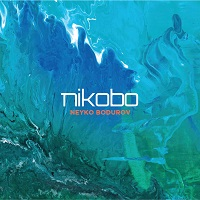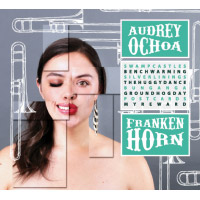Home » Jazz Articles » Book Review » Rabbit’s Blues: The Life and Music of Johnny Hodges
Rabbit’s Blues: The Life and Music of Johnny Hodges
Alto and soprano saxophonist Johnny Hodges was one of the most singular voices in jazz. He didn’t play the horn as much as sing through it. He was also a somewhat inscrutable, taciturn, and quiet man, with a relatively uneventful personal life.
 Rabbit's Blues: The Life and Music of Johnny Hodges
Rabbit's Blues: The Life and Music of Johnny Hodges Con Chapman
240Pages
ISBN: #9780190055288
Oxford University Press
2019
Alto and soprano saxophonist Johnny Hodges was one of the most singular voices in jazz. He didn't play the horn as much as sing through it. Hodges made a large, long-term contribution to the music, both as a member of the Duke Ellington Orchestra and on his own. He was also a somewhat inscrutable, taciturn and quiet man, with a relatively uneventful personal life. This makes him a tough case for the would-be biographer, but author Con Chapman carries off the task well. Anyone who spends several pages just parsing out how Hodges got his nicknames (Little Caesar, Squatty Roo, Jeep, but mostly, Rabbit) has things under control.
This is not really a work that breaks a lot of new ground. There are no interviews conducted by Chapman listed in the footnotes and it appears that the information has been pieced together from secondary sources. However, in putting together this biography, Chapman seems to have drawn on every source that offers even the smallest shred of information about Hodges. His authorial voice flows well and his attempts at interpreting Hodge's motivations, understanding his personality and placing his contribution in a wider context are viable.
Hodges, born in 1907, was originally a Cambridge/Boston guy and one of the most interesting sections of the book is Chapman's knowledgeable description of the local jazz scene in the 1910's and '20s. Hodges was a musical prodigy (and a natural truant). He picked up gigs as a pianist at rent parties at age 13, then started on the sax and began gigging on that horn soon after. In the early 1920's, he travelled back and forth in the "Boston-New York Pipeline," finally moving to New York either in 1924, or 1925—Chapman relates conflicting stories about this.
Chapman discusses what was a hot issue among musicians in the NYC jazz melting pot of the 1920's: the difference between "Eastern" style (New York City) and "Western" (everywhere else). This is an interesting discussion; one that potentially offers insights into the way jazz evolved. However, the musicians quoted here offer up contradictory descriptions of each style, which serve to obfuscate more than clarify. I'm not saying Chapman didn't do his homework. This may just be a case of a subject that is too complex and subjective to offer up neat conclusions.
When he was a soprano sax-playing teenager, Hodges had the chance to see and even meet Sidney Bechet, who became an important early influence. Bechet later gave him a soprano sax that he kept his whole life. Hodges took up the alto and it was on that horn that he made his reputation. Interestingly, in 1940, after Hodges had been with Ellington for more than a decade, he stopped playing soprano in the orchestra. The reason? He wanted double pay for playing alto and soprano and Ellington wouldn't give it to him. For many years, Hodges was the best-paid member of Ellington's group, but their relationship, as told by Chapman, was a complicated one. One part of this was money. The other seems to have been sex and jealousy. Ellington was always surrounded by women and Hodges wasn't. One could say Ellington was successful with women because of his looks and status and/or because he bound mistresses to himself by providing financial benefits. However one puts it, Hodges was apparently less successful in this respect. He was short of stature and less handsome. Further, Hodges seemed galled that the deeply romantic quality of his playing seemed to provoke swoons, but not that much carnal activity.
It should also be noted that Hodges never became a great reader (sight reader of music) and he occasionally clashed with Ellington when he thought Ellington's charts had strayed too far away from the blues, ballads and the foundational style that made the orchestra famous.
Hodges' sound gets full due in this biography, as it should. Hodges was a great player at any tempo, but at slow tempos, he was able to shape sound in a way that no one else ever has. Chapman makes an interesting conjecture that the Ellington band was able to avoid having to hire a vocalist for many years because the song-like playing of Hodges fulfilled the emotional space that would have been taken up by a singer.
Hodges' main competitor for primacy on alto sax was Benny Carter. One can say that their sound was in the same "family," although very different. In the late 1920's through the 1940's, most alto sax players (and some tenor sax players) modeled their playing after one of those guys—or possibly saxophonist Willie Smith. In all three cases, sound-tone was the most important element. A clear marker in jazz occurred when the influence of these players diminished, almost disappeared in fact, under the onslaught of Charlie Parker, who was less about a "pure" sound than about notes, harmony and velocity. Parker's influence built during the course of the 1940's, until, by 1950, he had become "The Man."
John Coltrane spent half a year playing in a Hodges band in 1952, which allows Chapman to spend some time on how Trane wrestled with his own sound. He notes sweet tooth problems that impacted Coltrane's embouchure (Butter Rum Life Savers were the main culprit) and quotes Hodges saying that Trane was "having his teeth fixed all the time" and that Coltrane "came to fear the drill so much that it sometimes took two or more assistants to hold him in the [dentist's] chair."
I think most jazz people would find this and a number of other incidents and stories in the book fascinating. One such story concerns jukeboxes, which proliferated in the mid-1930's. Ellington had been recording for the Brunswick label, which charged $0.75 per disc. Competing labels charged only $0.35 retail and $0.19 wholesale. This priced Ellington's music out of the market. Helen Oakley, a major if unknown force in jazz at this time, was hired by Ellington at the suggestion of his manager Irving Mills to put together sessions featuring sub-groups from the Ellington band to record for the lower-priced Varsity Record label. These recordings made Ellington's musicians a force in the jukebox trade and were also an aesthetic success.
A similarly interesting story is told about the effect of the imposition of the Cabaret Tax in 1944. This tax was levied on any NYC venue that served food, drink and that allowed dancing. It was a 30% tax, which was then lowered to 20%—still significant. This tax was obviously an incentive for venues to hire music only for listening, not dancing and this, in turn, paved the way for bebop music. One didn't find any dancing joints on 52nd St.
There are times when I got frustrated by Chapman's idiosyncratic approach to chronology and a lack of dates being attached to certain events. Also, there is no discography and no index. However, I'm working off an advance copy and those elements may appear in the final version of the book.
As I said at the top of the review, Hodges was a man of relatively few words and many of those seemed contradictory. So, like a painter whose subject refuses to sit for long, Chapman is forced to limn Hodges' personality in relatively few lines, using dark and shadow to try and bring out hidden emotional corners. However, Hodges' music is what chiefly concerns us and although lacking a few "why's," Chapman does a thorough job of the "who's," "what's" and "where's."
Chapman bemoans aspects of the change to saxophone playing wrought by Charlie Parker, saying that after Parker: "the kingdom of the alto was divided in two—like King Lear's Britain." On one side, you had the few following in the sonic wake of Hodges—Paul Desmond and Art Pepper, for example, and on the other, you had almost everyone else. It led, he says, to a diminution of the emotions that were expressed in jazz. There are those who demur, believing that Hodges' playing sometimes veered toward schmaltz, and citing a record he made with the Lawrence Welk band in 1965. In fact, both Hodges and Ellington liked and admired Welk's band (as Louis Armstrong liked Guy Lombardo and Ray Charles liked Jackie Gleason's easy listening albums). My own opinion aligns with Chapman's assessment of his playing: "Hodges... kept his tenderness in reserve—never laying it on too thick—and used technique to express emotions without maudlin flourishes."
Johnny Hodges' record as Ellington stalwart, bandleader and recording maestro speaks, no—it sings, for itself and this biography brings you closer to the song.
Tags
Book Reviews
Steve Provizer
Oxford University Press
Johnny Hodges
Rabbit’s Blues: The Life and Music of Johnny Hodges
PREVIOUS / NEXT
Support All About Jazz
 All About Jazz has been a pillar of jazz since 1995, championing it as an art form and, more importantly, supporting the musicians who make it. Our enduring commitment has made "AAJ" one of the most culturally important websites of its kind, read by hundreds of thousands of fans, musicians and industry figures every month.
All About Jazz has been a pillar of jazz since 1995, championing it as an art form and, more importantly, supporting the musicians who make it. Our enduring commitment has made "AAJ" one of the most culturally important websites of its kind, read by hundreds of thousands of fans, musicians and industry figures every month.
























